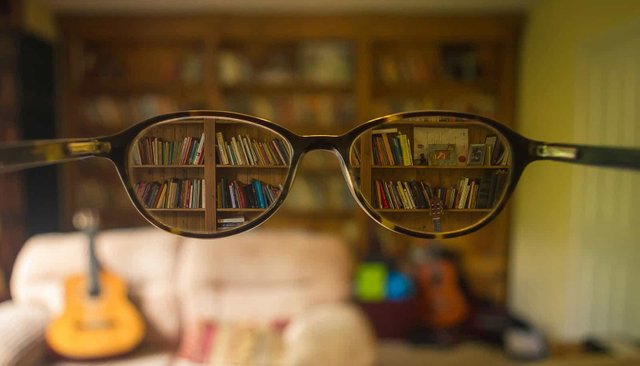Presbyopia is the irreversible loss of the accommodative ability of the eye that occurs due to aging. Accommodation refers to the ability of the eye to increase its refractive power of the crystalline lens in order to focus near objects on the retina. The most significant decrease in accommodative power occurs in between the ages of 20 and 50. In the first two decades of life accommodative amplitude has been shown to be relatively stable in the range of 7-10 diopters. By the age of 50, accommodative amplitude has typically decreased to about 0.50 diopters. This decline occurs as a natural result of aging and will ultimately affect any person reaching advanced enough age. Despite its ubiquity, the exact mechanism behind presbyopia remains unknown.
Who are affected or who are at risk?
The prevalence and magnitude of developing presbyopia is greatest after age 40. The risk of developing clinically early presbyopia is largely determined by a combination of hereditary factors and biologic variation. Although age is the primary predictive factor in the development of presbyopia, early loss of accommodative ability can be induced by certain systemic disease, medications, and trauma. It is also important to note that individuals whose occupations require extensive use of near vision and myopes often notice symptoms earlier than other similarly aged individuals.
When are they affected?
Presbyopia is primarily an inevitable, age-related condition and accordingly its prevalence in a given population is related to the percentage of individuals surviving to old age. The average age of those first reporting symptoms of presbyopia is between 42 and 44 years of age with a complete loss of accommodation typically occurring between the ages of 50-55 years
Where they are affected
Epidemiologic studies have been carried out in different locations around the world in various age, sex and ethnic groups, in an attempt to assess the prevalence rates of presbyopia. Results from this studies suggest that presbyopia is not confined to a particular geographical location. Though the prevalence differs from one location, community, state or country to another, presbyopia is a global health problem.
Why are they affected?
There are a number of factors that account for the development of presbyopia. Some of which include age, biological factors, hereditary as well as pathological conditions. The underlying cause for the loss of accommodation in presbyopia has yet to be fully elucidated and remains a topic of controversy amongst the medical community. Models for presbyopia can be generally divided into two categories referred to as lenticular and extra-lenticular theories. Lenticular theories hold that presbyopia results from age-related changes in the lens, capsule, and zonular fibers. Implicated changes in this category include sclerosis of the nuclear lens tissue, decreased distance between ciliary muscle and lens equator, and decreasing elasticity of the lens capsule. Proposed extra-lenticular causes include ciliary muscle dysfunction, loss of elasticity in the posterior zonules or choroid, and even decreasing resistance of the vitreous humor against the accommodating lens capsule.

What is @bettervision about?
@bettervision is is a project initiated by @nattybongo and friends to give back to the society the knowledge and skill acquired through the Optometric Studies in Kwame Nkrumah University of Science and Technology, Ghana.It is an outreach system where we visit the less privileged communities to offer free eye screening services and education to the people within the community
AIMS AND OBJECTIVES
To reduce or prevent vision loss through diseases such as glaucoma, cataract and refractive errors.
To enlighten the majority of the Ghanaian population about the importance of proper visual care.
To conscientize people on the need for regular eye checks
To get more people to have their wards screened within the Critical periods of a Child’s Vision Development; thus from ages 3 to till about 10 years.
To help the blind and people with low vision live a better life within the society through education of the general public to stop stigmatization.
To help in the fight of extreme poverty that puts the health of people at risk

Our greatest gratitude goes to @fundition @adollaraday @surfyogi @girlsfoundation @bleepcoin @ackza @indigoocean @nanzo-scoop @steemstem @demotruk @pennsif @steem-ambassador @kasho and @wafrica for helping to make the aims and objectives of @bettervision a reality.







Hello! I find your post valuable for the wafrica community! Thanks for the great post! We encourage and support quality contents and projects from the West African region.
Do you have a suggestion, concern or want to appear as a guest author on WAfrica, join our discord server and discuss with a member of our curation team.
Don't forget to join us every Sunday by 20:30GMT for our Sunday WAFRO party on our discord channel. Thank you.
Downvoting a post can decrease pending rewards and make it less visible. Common reasons:
Submit
This project is being supported by @Fundition the next-generation, decentralized, peer-to-peer crowdfunding and collaboration platform, built on the Steem blockchain.
Read the full details of Fundition Fund program
Learn more about Fundition by reading our purplepaper
Join a community with heart based giving at its core
Fundition is a non profit project, by supporting it with delegation you are supporting 200+ projects.
50SP100SP200SP500SP1000SP2000SP5000SP10000SP
Downvoting a post can decrease pending rewards and make it less visible. Common reasons:
Submit